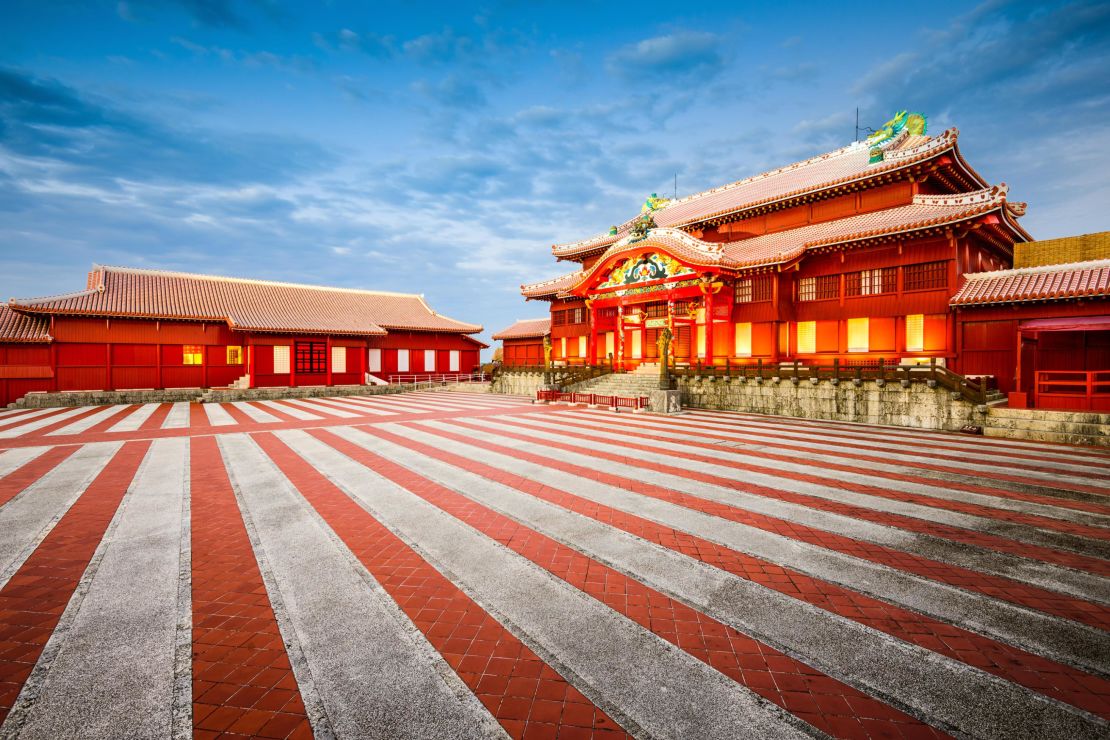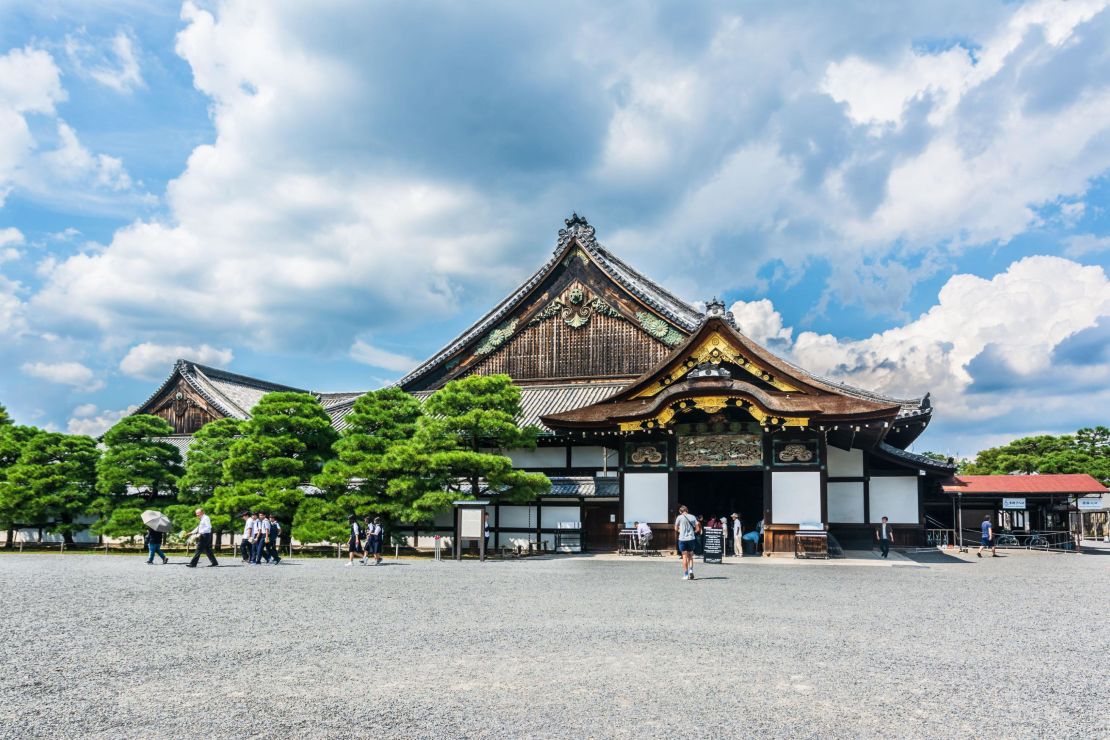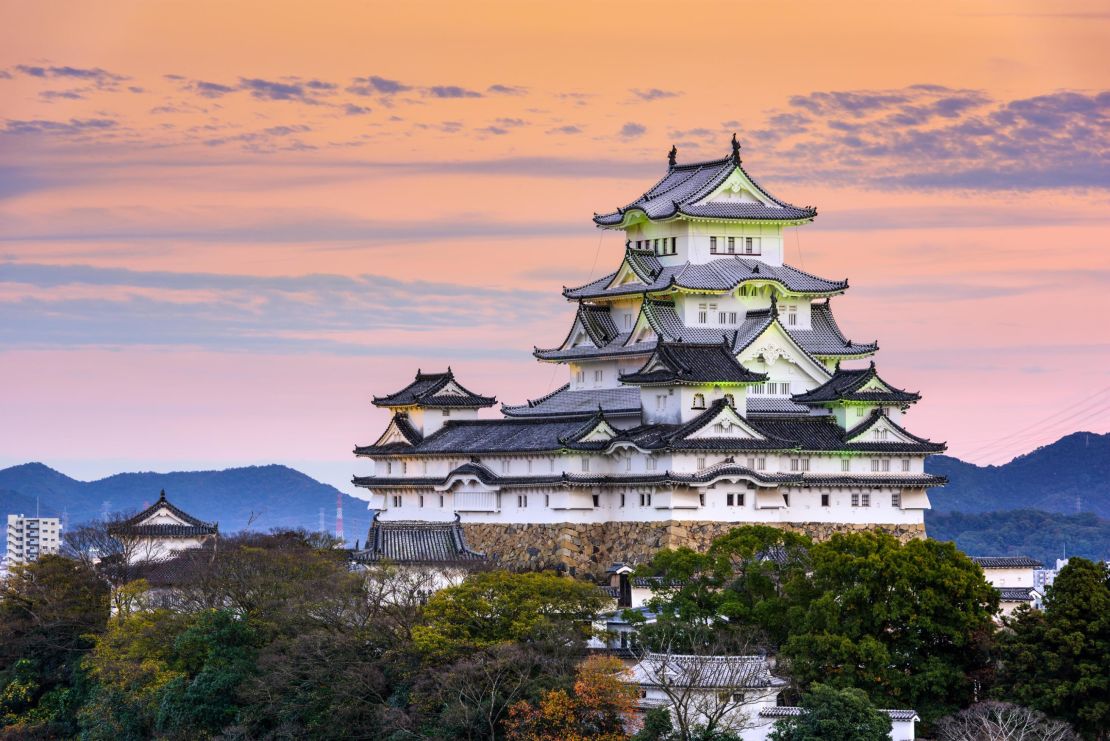Editor’s Note: Monthly Ticket is a CNN Travel series that spotlights some of the most fascinating topics in the travel world. As the UK crowns a new monarch, we’re exploring all things royal, from castles to grand tours.
During Japan’s Sengoku “Warring States” era (1467-1615), castles were constructed, bolstered and fortified all across the Japanese archipelago, resulting in approximately 5,000 individual keeps.
Though many were razed at the behest of the Tokugawa Shogunate during the Edo period (1603-1868) and subsequently following the Meiji Restoration of 1868, when power was restored to the emperor, over a hundred remain throughout the country today.
Here are some of Japan’s best castles that you can still visit.
Hirosaki Castle
Surmounting a hill in Aomori prefecture, in the heart of Japan’s deep north, sits Hirosaki Castle; a tiered keep surrounded by yaruga (turrets) and fortified moats.
With construction finishing in 1611, the castle was built as Japan was entering a prolonged period of peace under the Tokugawa Shogunate, and as such, never bore the brunt of siege or invasion.
The original five-story tenshu (main keep) was destroyed, however, after it was struck by lightning in 1627, being replaced in the early 19th-century by the three-story structure visible today.
Alongside the striking feudal architecture, spring sakura (cherry blossom) season is a major draw for travelers to Hirosaki Castle. More than 2,600 sakura tress dot the castle gardens, scattering their petals on the across the adjacent lawns and moats every spring.
Shuri-jo Castle

Elevated above Naha City and surrounded by brooding, fortified walls, Okinawa’s Shuri-jo Castle is emblematic of the gusuku castle style of the old Ryukyu Kingdom (the former name of Okinawa).
Its construction defies the architectural blueprint of castles seen elsewhere in Japan, with a royal wooden citadel of rich vermillion, emblazoned with dragons and Chinese iconography – which hint at Okinawa’s pre-nation-state influences.
When Shuri-jo was first constructed in the 14th century, it was the seat of power in the Ryukyu Kingdom until Japan annexed the Okinawa islands in 1879. Before it was neglected under imperial rule, it served as the kingdom’s center of diplomacy, governance and spirituality for centuries.
Though it was restored and ultimately designated a UNESCO World Heritage site, Shuri Castle was tragically destroyed in a large fire in 2019. Reconstruction is currently underway with a view to faithfully restoring the main buildings once more by 2026.
Edo Castle
Edo Castle, bearing the former name of Tokyo, has one of the longest lineages of all Japan’s castles. A fortified palace was first erected on the site during the Heian period (794-1185). The samurai Ota Dokan then designed a fortress to replace the palace in 1457, before influential daimyo (feudal lord) Tokugawa Ieyasu subsumed control in the late 16th century.
This acted as the catalyst for sweeping architectural renovations and massive urban expansion, turning Edo from a small, fortified village to the defacto capital of the nation, embodied by the grand castle at its center point.
Edo Castle was huge in its prime, surrounded by a 15-kilometer outer moat crossed by over 30 gates and bridges.
Remnants of the original structures can be found throughout Tokyo, though the Imperial Palace, home of the current emperor, is the best place to get a sense of its former glory. Sections of the grounds are off limits, but the pristine Imperial Palace East Gardens are open to the strolling public.
Matsumoto Castle
Constructed in the 16th century at the behest of Japan’s “Great Unifier,” Toyotomi Hideyoshi, the black-walled Matusmoto Castle juxtaposes against the snow-crowned Northern Alps encircling Matsumoto City.
Also known as Karasu-jo (the Crow Castle), it was largely spared destruction and retains one of the nation’s oldest extant keeps.
Matsumoto Castle exhibits the architecture of both war and peace, from its steep wooden stairs, hidden inner levels and archer’s perches to the moon-viewing room added in 1630, which also offers a vantage point for viewing the brocaded carps and ducks residing in the castle moat.
On winter nights the castle hosts an illumination event, throwing its glowing reflection across the moat’s surface.
Nagoya Castle
In Aichi’s thriving capital city, Nagoya, you’ll find the eponymous Nagoya Castle, whose regal towers overlook the gardens and moats below.
Upon instruction from the Shogun, Nagoya Castle was built as an administrative center during the early Edo period, following an era of nearly 150 years of interstate warfare. Conflict would come for the castle much later, when it was destroyed in bombing raids during World War II. But restoration efforts have captured the essence of its medieval heyday.
Nagoya Castle is renowned for the magnificent golden shachihoko (tiger-like fish) protruding from its zenith – once earning it the epithet Kin-jo (Golden Castle) – and its sloping mint green roofs.
It’s not currently possible to enter the main keep, as it doesn’t meet modern earthquake-resistance standards, though continued renovations over the next few years aim to make it fit for purpose by 2028.
Osaka Castle
Osaka Castle is one of Japan’s most famous landmarks, playing a pivotal role in the culmination of the Sengoku era. Upon unifying Japan in 1590, samurai Toyotomi Hideyoshi looked to expand upon his base fortress in Osaka driven by a desire to outdo his former lord, Oda Nobunaga.
His efforts to create an unassailable defense were posthumously thwarted, however, when the castle fell to the Tokugawa Clan in 1615.
The five-story Osaka Castle, a recreation of the original keep (which was destroyed on several occasions), is built on solid cyclopean foundations, with mint green roof tiles and golden accoutrements that bear striking similarities with Nagoya Castle.
Inside you’ll find a walk-through museum detailing the fraught political history of the region and the various samurai who claimed it as their home. The exhibition culminates in a 360-degree viewpoint on the top floor.
Nijo Castle

Nijo Castle was the official residence of the Shogun during the Edo period – though the succession of military rulers would spend most of their time ruling from the seat of power in Edo (now Tokyo).
Following the Meiji Restoration, the castle became an imperial palace before it was opened to the public as an historic site.
The squat, hirajiro (flatland) castle has many of the trappings of Japanese feudal architecture: a wide perimeter moat, an imposing karamon (entry gate), concentric sections separated by reinforced stone walls and squeaking “nightingale” floorboards to detect intruders.
You can stroll through most of the castle grounds today, while audio guides in multiple languages are available at the entrance.
Inuyama Castle
Inuyama Castle is significant for having the oldest original tenshu (fortified tower) in Japan, dating back to 1580, and is one of only five castle keeps to have National Treasure status.
It was also the first fortress owned outright by the bloodthirsty tyrant who first attempted to unify Japan, Oda Nobunaga.
Inuyama Castle’s strategic hilltop location provided its resident samurai with sprawling views of the surrounding plains and the turbulent Kiso River at its base. Today, travelers to the site benefit from this jaw-dropping viewpoint, which now casts its gaze over the surrounding towns and forests.
Hikone Castle
Though Hikone Castle in Shiga prefecture is a comparatively unassuming structure, it’s significant in that its main keep (which has been designated a National Treasure) and many of the surrounding structures remain intact.
This is partly due to its completion in 1622, after the Tokugawa Shogunate had established peace across the nation, and its location in a relatively obscure stretch of western Japan.
Viewpoints from the hilltop castle look towards Lake Biwa, Japan’s largest inland body of water, which engulfs the center of the prefecture. There’s also a Hikone Castle Museum at the foot of the hill, showcasing artifacts and historical documentation from the Ii Clan that established the fortress some 400 years ago.
Bicchu Matsuyama Castle
The 13th-century Bicchu Matsuyama Castle, perched above quiet Takahashi City in Okayama prefecture, is thought to be Japan’s original yamajiro (mountain castle). At 430 meters (1,400 feet) above sea level – the highest elevation for any castle in Japan – would-be invaders were required to slog uphill through dense shrubbery and a volley of projectiles just to alight upon the castle gates.
The hike today, better-worn than in the medieval era and freer of inbound arrows, should be achievable for anyone with a moderate level of fitness. It’s certainly worth breaking a sweat for views of the undulating Okayama countryside from the castle ramparts or unkai (seas of clouds) floating above the valley on spring and autumn mornings.
Himeji Castle

Himeji Castle’s nickname, “Castle of the White Heron,” hints at the poetic magnificence of its storied keep: the multitiered, pearly white edifice soars high above the low-lying Himeji City.
Its origins date back to the early 1300s, after which it underwent several acquisitions and remodeling efforts at the hands of Toyotomi Hideyoshi, Tokugawa Ieyasu and several other daimyo, respectively. It has also remained largely intact throughout its 700-year history, surviving multiple recent atrocities, from aerial bombs in the 1940s to the 1995 Great Hanshin Earthquake.
These factors helped Himeji Castle become Japan’s first-ever UNESCO World Heritage Site.
Furthermore, the castle is the location of Okiku’s Well, where the eponymous servant’s ghost is said to reside. The well owes its infamy to the folktale Bancho Sarayashiki, which subsequently inspired the horror film “Ringu” (1998) and its Hollywood adaptation “The Ring” (2002).
Matsue Castle
Built in the early 1600s near the shores of Lake Shinji, Matsue Castle is one of the only remaining keeps on Japan’s central western coast.
Its original purpose was to help the new shogun, Tokugawa Ieyasu, consolidate his power in the largely provincial region. Today, its imposing black walls and gray, tiered roofs stand sentinel over a bottle-green perimeter moat in the heart of Matsue’s old quarter.
Across the street from the castle you’ll find nods to Matsue’s most prized cultural asset: the Lafacadio Hearn Museum and his former residence. A 19th century author of Irish-Greek heritage, Hearn ascended into the pantheon of Japanese literary heritage as a cultural essayist and a master re-teller of local folktales.
Kumamoto Castle
Built by local daimyo Kato Kiyomasa in the early 1600s, Kumamoto Castle remains one of the most impressive feats of pre-modern architecture on the island of Kyushu (though most of its structures are now ferro-concrete rebuilds).
Unusual for Japanese castles, its wartime history extended beyond the Edo period and into the Meiji Restoration era, when local samurai rebelled against the new government, leading to a two-month siege in 1877.
Following a major earthquake in 2016 and a subsequent five-year renovation period, Kumamoto Castle’s main keep was reopened to the public in 2021. The castle’s outer walls, built from stern igneous rock, and the black-walled keep stand in stark contrast to the 800 cherry blossom trees that paint its gardens pink each spring.
This feature originally published in 2022 and was updated in May 2023.












